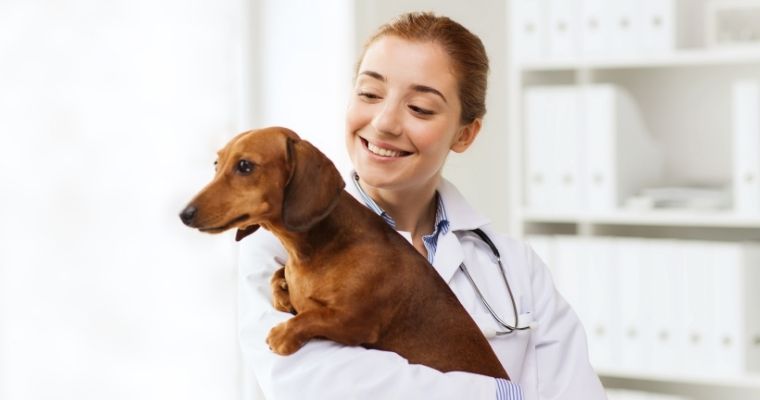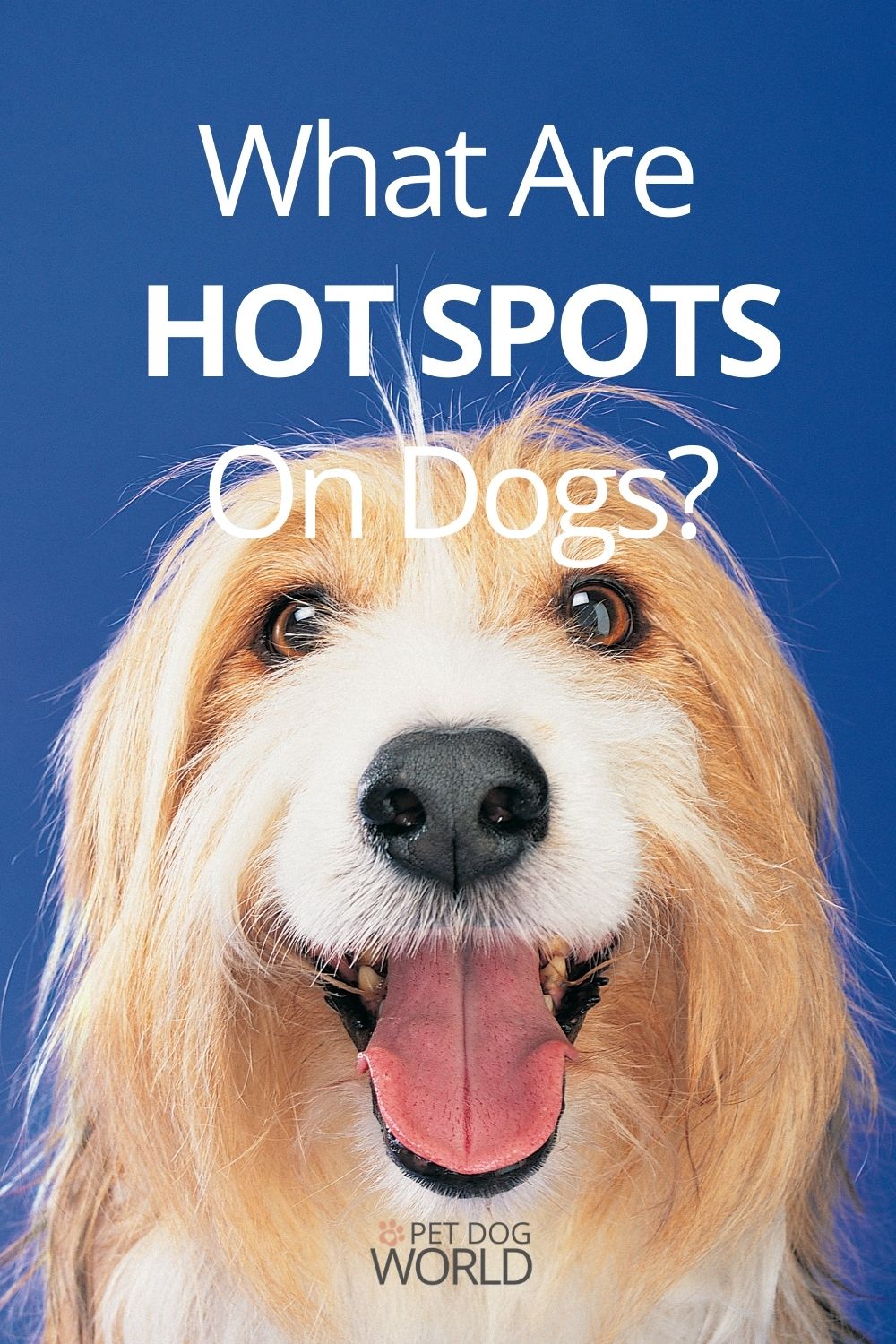Hot spots are painful, itchy and oozy areas of skin, and can cause a lot of discomfort and agitation to your dog. They can appear on any part of a dog’s body but mostly affect the face, hips, legs, neck, belly, and back.
Hot spots are one of the most common health issues that affect dogs every year (also known as acute moist dermatitis or pyotraumatic dermatitis). Their appearance and size can vary slightly depending on where they’re located.
As a pet owner, it’s important that you know more about this skin condition so you’ll be able to identify the signs and help your dog get treatment when the need arises.

What are Hot Spots?
These are simply localized areas of the skin that are inflamed and infected. Initially, they appear out of nowhere as a single small red area that many dog owners often mistake for an insect bite.
However, within a very short period of time, the infected area will spread and worsen, transforming into red, moist, itchy skin lesions. The lesions, which can be noticeable or hidden under the fur, may discharge fluid or pus, causing crusting and matting of hair in the surrounding area.
As you can imagine, this condition is extremely painful for your pet to go through. Many dogs deal with the discomfort by scratching, chewing, or licking the affected areas constantly, but doing so only makes hot spots worse.
What Causes Hot Spots in Dogs?
Anything that causes excessive moisture, licking, itching, or scratching in dogs can contribute to hot spots development. The most common triggers include:
– Food allergies or allergies to different things in the environment like dust mites, grasses, weeds, and trees.
– Excess moisture trapped in the dog’s coat from frequent bathing or swimming.
– Boredom or stress leading to excessive licking.
Other possible causes of hot spots include mites, fleas, insect bites, skin injuries, skin infections, ear infections, as well as dirty or matted coats.
Some dog breeds are also at a higher risk of developing hot spots because of their thicker coats. The most affected breeds are German Shepherds, English Bulldogs, Rottweilers, Labradors, St. Bernards, and Golden Retrievers.
It’s important to note that hot spots can appear at any time of the year. However, they are more common during the summer season when the weather is warm and humidity is high.
Treating Hot Spots in Dogs
If you suspect that your canine companion is suffering from hot spots, take him to the vet’s as soon as possible for a proper examination, identification, and treatment. Urgent veterinary attention is needed if:
– Your pet can’t stop scratching, biting, or licking the affected area.
– The affected area is bleeding continuously, increasing in size, or producing a colored discharge.
Vetericyn Plus Antimicrobial Hot Spot Spray.
Most vets prescribe a combination of anti-itch medications and oral antibiotics to treat hot spots in dogs, but this will depend on how severe your pet’s condition is. Extra medications such as allergy medication or flea preventatives may also be provided to help treat the underlying issues causing your dog’s hot spots.
How to Sooth Your Dog’s Hot Spots at Home
If, for some reason, you’re unable to get your dog to the vet’s clinic immediately, here are a few steps you can follow to soothe your dog’s hot spots at home. But first, you need to notify your vet of your intention to commence treatment from home.
• Using dog hair clippers, trim the fur around the hot spots carefully to prevent matting and allow air circulation to the affected area. Because some dogs flinch or get frightened as you do the trimming, it’s best to ask someone else to hold them down and comfort them.
Pet Union Professional Dog Grooming Kit – Rechargeable, Cordless Pet Grooming Clippers & Complete Set of Dog Grooming Tools. Low Noise & Suitable for Dogs, Cats and Other Pets (Stainless Steel).
• After trimming, use a mild antiseptic solution and cold water to cleanse the area gently.
• Apply a cool, wet washcloth to the area for a few minutes 2-4 times a day to provide the much-needed soothing and relieve irritation.
• Once the area is completely dry, apply a topical hot spots treatment to the lesions. You can ask your vet for recommendations if you don’t know which treatment to buy.
• Monitor how your dog reacts to the topical treatment you’ve just applied. If he continues to scratch, bite or lick the lesions, then have him wear a plastic cone or an e-collar to prevent the hot spots from getting irritated further. This should be done until the lesions heal completely.
• Continue cleaning and treating the hot spots on a daily basis to promote faster healing.
• Most hot spots disappear within a few days after starting treatment. However, if this isn’t the case with your dog, and the lesions seem to be getting worse, take him to the vet right away.
Ways to Prevent Hot Spots in Dogs
The key to preventing hot spots in dogs is correctly identifying the underlying causes and addressing them properly. For instance, if your pet’s excessive licking behavior is due to boredom, stress, or anxiety, try increasing his daily exercises, playing more with him, and giving him lots of interactive toys to keep him busy and engaged when you’re not around.
Here are other things you can do to prevent hot spots in dogs:
– Ensure that your pet’s skin is healthy at all times to keep skin conditions at bay.
– If there are skin infections, treat them immediately before they get worse.
– If your dog swims and bathes regularly, make sure you dry his coat thoroughly after these activities.
– Bathe and brush your pet regularly, especially during the hot summer months to remove irritants and allergens that may find their way onto his coat and skin.
– If your dog has a long coat, make sure you clip them while he’s outdoors in the sun. This helps to get rid of the warm, moist environment under his skin that’s conducive to the breeding of bacteria.
– Don’t skip your pet’s flea treatment sessions.
– Treat allergies to stop your dog from scratching and causing trauma to his skin.
Overall, hot spots are itchy, oozy, and painful skin lesions that occur in dogs, especially during summer when the weather is hot and humid. They may become a recurring problem when the underlying issues causing them are not addressed properly.
Because of this, it’s crucial that you have your pet examined by the vet as soon as possible if you notice signs of hot spots in him. With timely treatment and regular preventative measures, it’s possible to keep this skin condition at bay.


